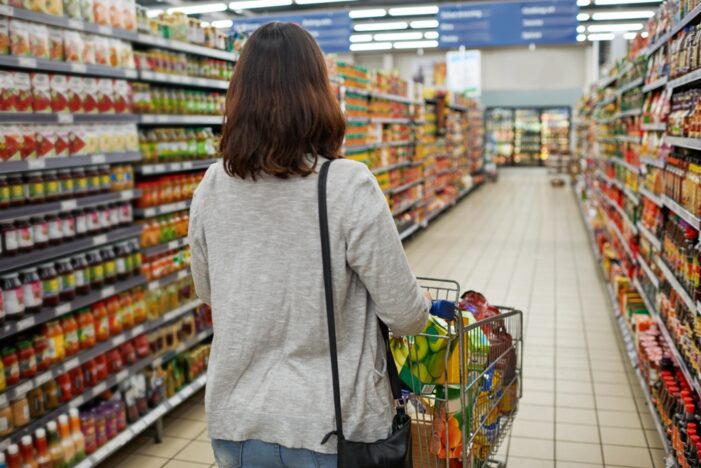| thecity.nyc
Shoppers walking into Frank Pimentel’s Superfresh on 149th Street in the South Bronx are immediately surrounded by an array of pristine fresh produce and vegetables. The display is a requirement of the city’s program to bring better grocery stores to so-called food deserts, where retailers of healthy food are scarce.
Tax breaks and other incentives from the FRESH Program were key to Pimentel’s decision to open the 14,000-foot store in 2016. He employs more than 60 workers, serves a customer base that is almost exclusively Black and Hispanic and is doing robust business.
“People have really educated themselves when it comes to healthy eating, and it doesn’t matter anymore what your income bracket is,” he said.
But about 40% of its sales are paid for with federal SNAP food benefits, which are headed for major cuts under President Donald Trump’s One Big Beautiful Bill — squeezing not only the households that will lose benefits, but also retailers like Pimentel that the entire community relies on.
“Our margins are really, really thin, and I will have to take action to make my business sustainable,” he added. “Its really going to put me in a bind and I am going to have to get rid of some people.”
Trouble for food retailers, landlords and their lenders will ripple throughout the economy, even as separate rollbacks to Medicaid hit the health sector.
SNAP benefits support 388,000 jobs throughout the United States, according to research by the National Grocers Association, a trade group of independent stores and regional chains. At some of those outlets, SNAP accounts for as much as 70% of sales.
“Our members make business decisions to go into communities because of the SNAP participation,” said Stephanie Johnson, vice president for government relations. “The businesses will struggle and it will affect the community and the SNAP beneficiaries.”
A survey by the group found that its members’ average profit margin is 1.4%. By contrast, Whole Foods and Walmart’s margins are double that. With so little cushion, she says, independent owners will have no choice but to reduce their workforce and probably the hours they are open as well.
Given the high costs of running a business in New York City, losing sales is not something Pimentel needs while he is “getting hit on all fronts.”
He is in a dispute with his landlord over increases in common charges for maintenance and related expenses, despite the fact the landlord gets a major property tax break under the FRESH program. Pimintiel’s ConEd bill is now $20,000 a month, with the utility asking for another increase. His payroll costs went up in January with an increase in the minimum wage.
Like other retailers, he was hit with a sharp increase in shoplifting following the pandemic that forced him to add security guards and expand the number of cameras in the store to 60. Each of the top executives now carries around a two-way radio. The organized groups of shoplifters have abated, but he continues to see attempts to steal merchandise.
Tariffs have yet to affect most of the food, he says, but costs for produce imported from Mexico have increased by 10% to 15%.
How many people will lose SNAP benefits remains uncertain. Stricter work rules going into effect next year will cause about 10% of beneficiaries to lose their assistance, according to the National Grocers Association.
The following year, states will see an increase in the share of SNAP benefits they have to cover, although how much remains unclear. Johnson says he thinks blue states like New York will be willing to absorb the cost but predicts Republican states may not be willing, with a big impact on stores there.
The Fiscal Policy Institute has estimated just under 300,000 New York families will lose benefits and another 400,000 are at risk of being forced off the program. It says more than 350,000 children are part of those households.
“Its the crux of how we feed our family,” said 46-year-old Melinda Goodwin, who was picking up her groceries at Superfresh recently.
The fallout from the Big Beautiful Bill extends far beyond grocery stores. The Trump administration’s proposal to drastically scale back federal housing voucher programs could force landlords who rely on vouchers to default on their loans. (House and Senate appropriation committees have restored much of the money in early work on appropriation bills but Trump is using rescission maneuvers not to spend money Congress had appropriated.)
Medicaid cuts could reduce revenues for New York health care providers by as much as $10 billion in revenue statewide, which could cost the state 78,000 health care jobs and additional 136,000 jobs as a result of economic spillover, according to the Fiscal Policy Institute. Just about half those jobs would be in New York City.
Pimentel, a 59-year-old immigrant from the Dominican Republic, calls himself the perfect example of the American dream.
“My dad had bodegas in the Dominican Republic and he sold them, and when he came here he gravitated to what he knew, which was grocery. So I learned the business at a very young age,” he recalled. “I just kept working in supermarkets and worked my way up. I always wanted to have my own business and, knock on wood, here we are.”
His wife works in the business as does his daughter, who had been a pharmaceutical salesperson and his son, who joined recently from J.P. Morgan Chase.
He still operates his original 7,000 square foot store on Morris Avenue in the South Bronx, which opened in 2009, and this fall he will open another 14,000 square foot supermarket with a nonprofit housing developer on Fulton Street in Brooklyn, which he is doing without the help of the city program. It too could employ as many as 60 people, depending on what happens to SNAP.
“We need to pay employees, we need to pay taxes, we need to pay the rent and we need to make a living,” he said.


